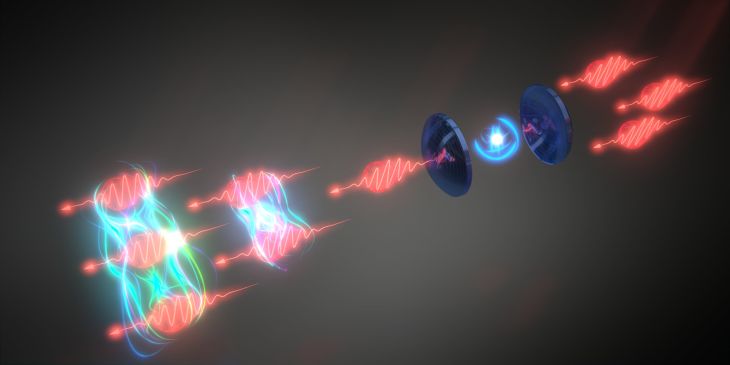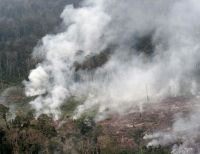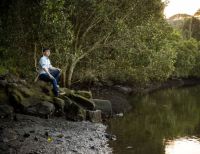
Joint lead author Dr Sahand Mahmoodian from the School of Physics.
For the first time, scientists at the University of Sydney and the University of Basel in Switzerland have demonstrated the ability to manipulate and identify small numbers of interacting photons – packets of light energy – with high correlation.
This unprecedented achievement represents an important landmark in the development of quantum technologies. It is published today in Nature Physics.
Stimulated light emission, postulated by Einstein in 1916, is widely observed for large numbers of photons and laid the basis for the invention of the laser. With this research, stimulated emission has now been observed for single photons.
Specifically, the scientists could measure the direct time delay between one photon and a pair of bound photons scattering off a single quantum dot, a type of artificially created atom.
“This opens the door to the manipulation of what we can call ‘quantum light’,” Dr Sahand Mahmoodian from the University of Sydney School of Physics and joint lead author of the research said.
Dr Mahmoodian said: “This fundamental science opens the pathway for advances in quantum-enhanced measurement techniques and photonic quantum computing.”
By observing how light interacted with matter more than a century ago, scientists discovered light was not a beam of particles, nor a wave pattern of energy – but exhibited both characteristics, known as wave-particle duality.
The way light interacts with matter continues to enthral scientists and the human imagination, both for its theoretical beauty and its powerful practical application.
Whether it be how light traverses the vast spaces of the interstellar medium or the development of the laser, research into light is a vital science with important practical uses. Without these theoretical underpinnings, practically all modern technology would be impossible. No mobile phones, no global communication network, no computers, no GPS, no modern medical imaging.
One advantage of using light in communication – through optic fibres – is that packets of light energy, photons, do not easily interact with each other. This creates near distortion-free transfer of information at light speed.
However, we sometimes want light to interact. And here, things get tricky.
For instance, light is used to measure small changes in distance using instruments called interferometers. These measuring tools are now commonplace, whether it be in advanced medical imaging, for important but perhaps more prosaic tasks like performing quality control on milk, or in the form of sophisticated instruments such as LIGO, which first measured gravitational waves in 2015.
The laws of quantum mechanics set limits as to the sensitivity of such devices.
This limit is set between how sensitive a measurement can be and the average number of photons in the measuring device. For classical laser light this is different to quantum light.














